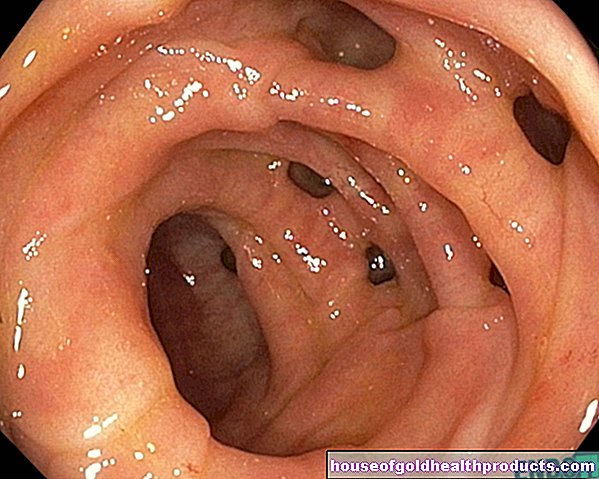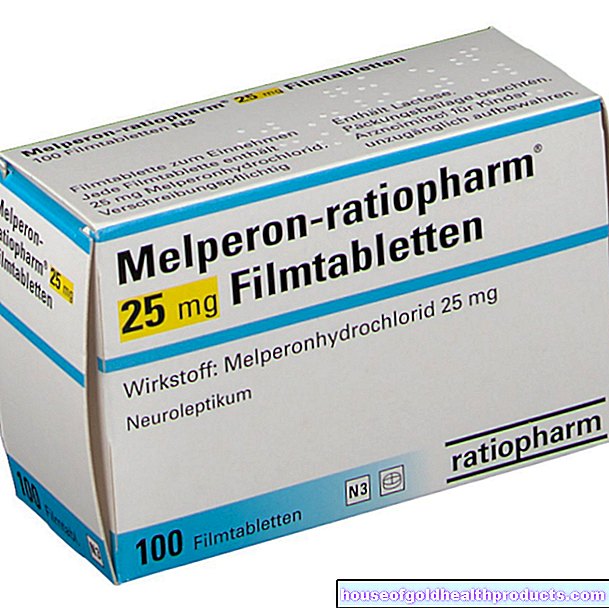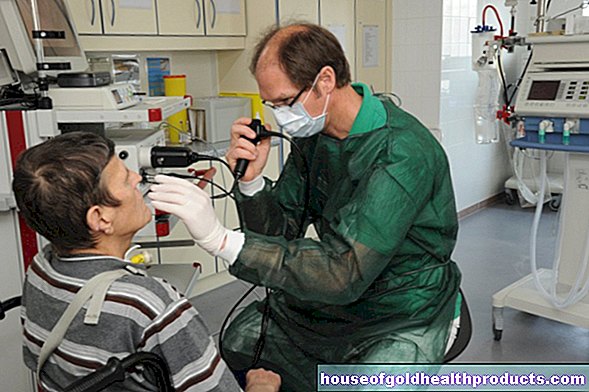Local anesthesia
All content is checked by medical journalists.Local anesthesia is the numbing of a limited area of the body. This is achieved with the help of drugs that interrupt the transmission of pain. The patient is fully conscious, but pain-free. In contrast to general anesthesia, local anesthesia is less risky and less stressful for the patient. Read all about the procedure, when it is done, and the benefits.

What is local anesthesia?
Local anesthesia suppresses pain in a limited area, for example on the skin or in the supply area of entire nerves on the extremities. The drugs used (local anesthetics) interrupt the transmission of signals in the nerve endings. This creates a local anesthetic. Duration and potency depend on the choice of drug and the amount used. In addition to the perception of pain, the sensation of temperature and touch as well as, in some cases, the muscle activity in the affected region are reduced.
Doctors differentiate between several types of local anesthesia:
- Surface anesthesia: applying the local anesthetic to the skin or mucous membrane
- Infiltration anesthesia: injection of the local anesthetic into the skin or tissue
- Regional anesthesia (central anesthesia): Blockage of an entire nerve, for example in the jaw or on the hand
When do you perform local anesthesia?
Local anesthesia is necessary for pain in a specific area, for example after an injury or before certain operations. Local anesthesia is often sufficient, especially for small interventions, and general anesthesia is not necessary. Possible reasons for local anesthesia are:
- Injuries to the extremities
- Eliminating pain in the throat when inserting a nasogastric tube or breathing tube while awake
- minor surgical interventions, such as suturing wounds
- dental interventions
- chronic pain, for example in the back or muscles
- Preparing a blood draw in children using an analgesic patch
In some operations, for example major operations on the knee, local anesthesia is used in addition to general anesthesia. As a result, patients experience less pain after the operation, which also reduces the consumption of medication. So-called pain catheters are often used for this purpose. A small tube remains on the pain-conducting nerves for a certain period of time, through which further local anesthetics can be injected if necessary.
What do you do with a local anesthetic?
Basically, with local anesthesia, special medication is used to interrupt the transmission of signals to the nerves. Pain stimuli, but also signals for pressure or temperature, are no longer transmitted from the numb area to the brain. Thus, there is no conscious sensation of these stimuli in the patient.
The drugs used (local anesthetics) do not get into the bloodstream, but only work where they are applied or injected. That is why one speaks of a local anesthetic. The exact procedure depends on the type of local anesthesia:
Surface anesthesia
With surface anesthesia, the anesthetic drug is applied directly to the skin or mucous membrane. Sprays, ointments and solutions are used. The agents are absorbed into the skin and block the nerves there in a relatively small area.
Infiltration anesthesia
In contrast, with infiltration anesthesia, local anesthetics are injected into the tissue, where they are distributed around the nerves. Under no circumstances should you inject a drug directly into the nerves, as this could damage them.
Regional anesthesia
With regional anesthesia, also called central anesthesia, one or more nerves are completely blocked. Depending on the level of the nerve at which this happens, you can numb larger areas of the body with the help of regional anesthesia. For example, local anesthetics are injected in the area of the groin to switch off the sensation of pain in the leg. Regional anesthesia also includes the so-called spinal cord-related procedures, i.e. epidural anesthesia and spinal anesthesia.
What are the risks of local anesthesia?
In principle, local anesthesia is associated with significantly fewer risks than general anesthesia, since the drugs used only work within a specific area and not in the entire body. However, it can happen that larger amounts of the active ingredients get into the bloodstream and then have a systemic effect. This happens, for example, if the drug is accidentally injected into a vein or into an area that is particularly well supplied with blood. Possible complications are seizures and / or severe cardiac arrhythmias, which can also make artificial ventilation necessary.
Allergic reactions to a local anesthetic are also possible, albeit rarely. These manifest themselves, for example, in itching and reddening of the skin, but in severe cases also shortness of breath and circulatory failure. Furthermore, the puncture site can become inflamed after the drug has been injected if germs get into it.
What do I have to pay attention to in the case of local anesthesia?
If your pain persists or gets worse despite using local anesthesia, your doctor may be able to use another pain relief method. If you notice a metallic taste at the beginning of the local anesthetic or if you feel dizzy, you must inform your doctor immediately, as this indicates a poisoning from the local anesthetic medication.
Tags: diet laboratory values nourishment





























